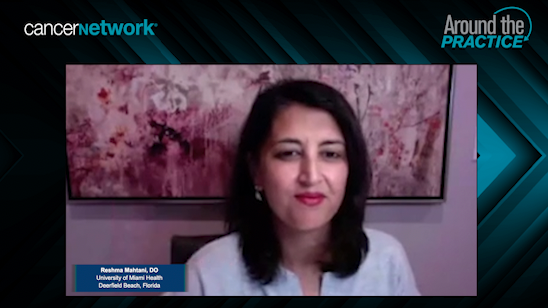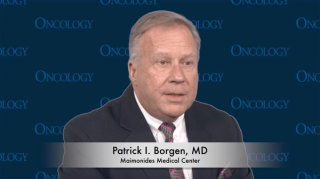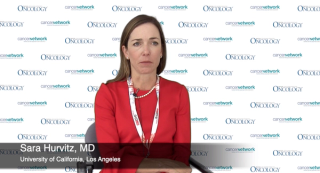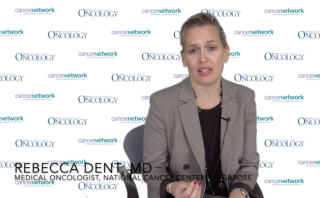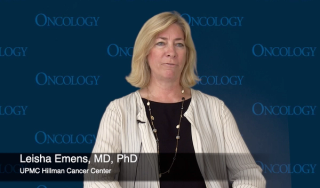
Breast Cancer
Latest News

Latest Videos

More News

Olaparib, which was granted priority review by the FDA, has been shown to improve invasive disease-free survival for patients with BRCA-mutated HER2-negative high-risk early breast cancer.

In another patient case, panelists break down third-line therapy options for someone with HER2+ metastatic breast cancer and lung disease.

Moving to optimal treatment approaches in second-line therapy, experts close out a patient case of HER2+ metastatic breast cancer.

Patients who were given extended 5-year treatment with letrozole plus 2 to 3 years of tamoxifen experienced an improvement in disease-free survival compared with 2 to 3 years of treatment with letrozole.

Breast cancer survivors who are minorities or medically underserved appear to experience a benefit in health-related quality of life after taking part in a community-based physical activity program.

Patients with stage IV breast cancer who received a systemic therapy plus surgery experienced a higher survival benefit than those receiving systemic treatment alone.

Using a patient case to center their discussion, the panel reviews frontline treatment options for HER2+ metastatic breast cancer and the rationale behind selection.

Fielding questions from a live audience, experts discuss the lack of biomarkers in HER2+ metastatic breast cancer and how one might address progression of bone disease.

Attention needs to be paid to the psychosocial needs of patients, especially those with poor health-related quality of life, who have little support, or are single mothers.

A panel of experts reviews clinical trial data in recurrent HER2-positive metastatic breast cancer and discusses impacts on treatment selection.

Panelists provide an overview of the treatment landscape for patients with HER2-positive metastatic breast cancer.

Patients with hormone receptor–positive breast cancer in 3 separate subgroups showed an overall survival benefit when treated with eftilagimod alpha plus paclitaxel compared with the placebo.

Research estimates suggest that the cost of metastatic breast cancer, especially in younger and midlife women, is expected to rise from 2015 through 2030 along with the overall prevalence of cases.

Germline testing for BRCA1/2 mutations in tumor tissue for treatment selection of PARP inhibition in HER2-negative metastatic breast cancer did not show large differences in outcomes compared with blood testing, inferring feasibility of tumor testing.

Findings from a study indicated that non-Hispanic American Indian and Alaskan Native patients with breast cancer were more likely to undergo a mastectomy compared with non-Hispanic White patients.


Patients with hormone receptor–positive, ERBB2-negative advanced breast cancer experienced significant anti-tumor activity when treated with fulvestrant and palbociclib but did not see an improvement in progression-free survival compared with letrozole and palbociclib .

Patients who were treated with extreme hypofractionation after breast conserving surgery saw no increase in ill-treatment effects compared with those receiving moderate hypofractionation.

Patients with estrogen receptor–positive, HER2-negative advanced or metastatic breast cancer experienced a progression-free survival benefit after being treated with elacestrant.

Investigators compared tradeoffs in breast cancer screening strategies in Black patients vs White patients.

The Society for Immunotherapy of Cancer published clinical practice guidelines for treating patients with breast cancer using immunotherapy.

The FDA has given the Ki-67 IHC MIB-1 pharmDx assay a companion diagnostic approval for detecting Ki-67 expression in patients with high-risk early breast cancer who are being considered for treatment with abemaciclib.

Based on a subgroup analysis from the monarchE trial, the FDA approved abemaciclib as adjuvant therapy in women with high-risk early breast cancer

Investigators identified a correlation between financial toxicity significant differences in mental and physical quality of life, and patient satisfaction with breast reconstruction among patients with breast cancer.

Patients with early breast cancer appear to have consistent prognostic value associated with residual cancer burden, regardless of disease subtype.




